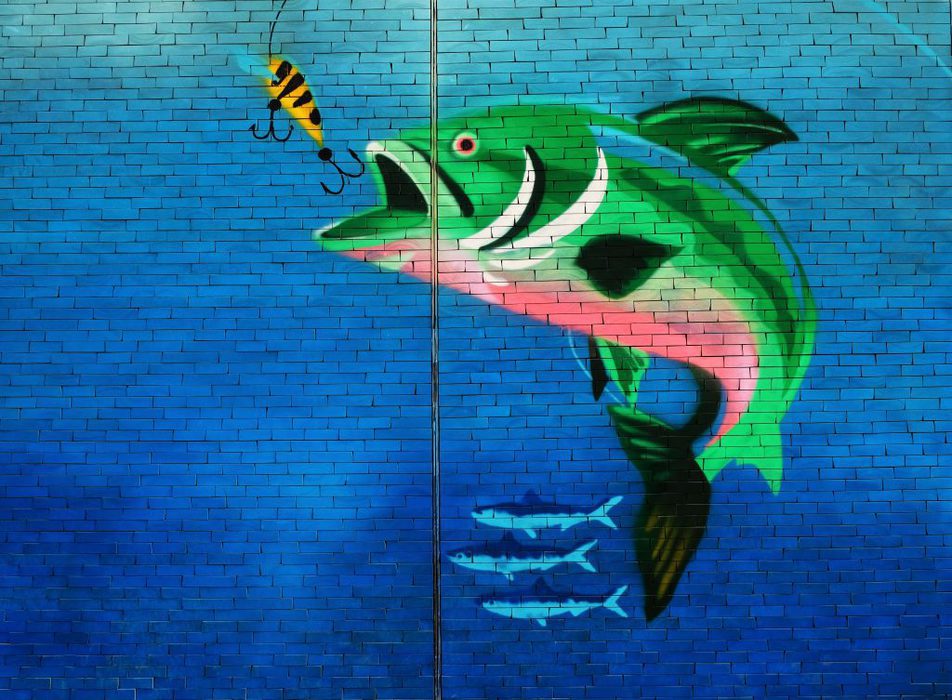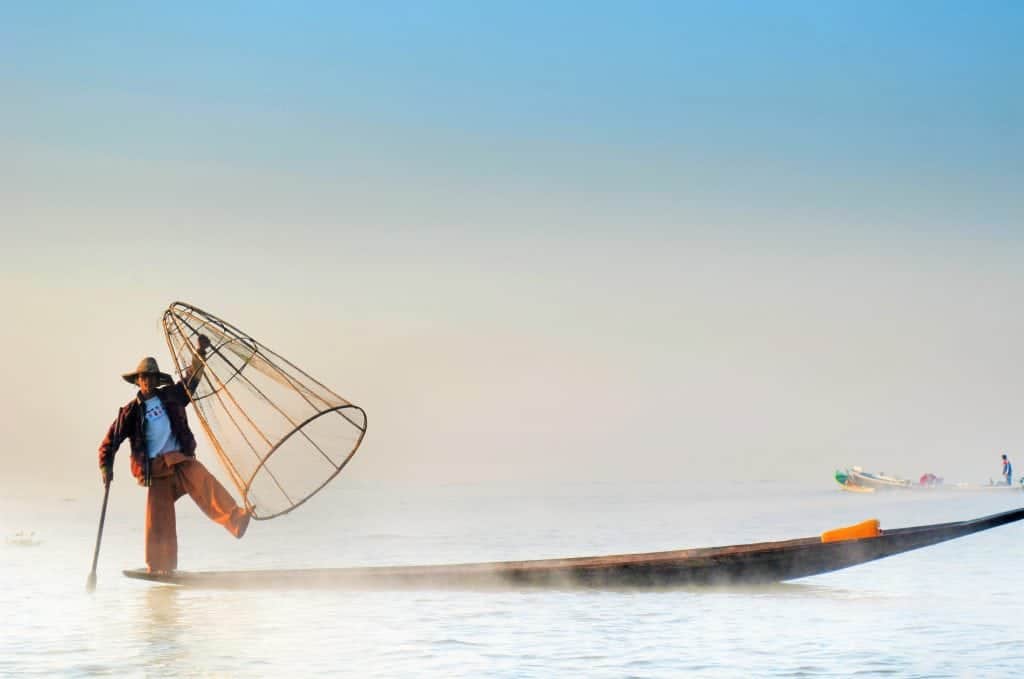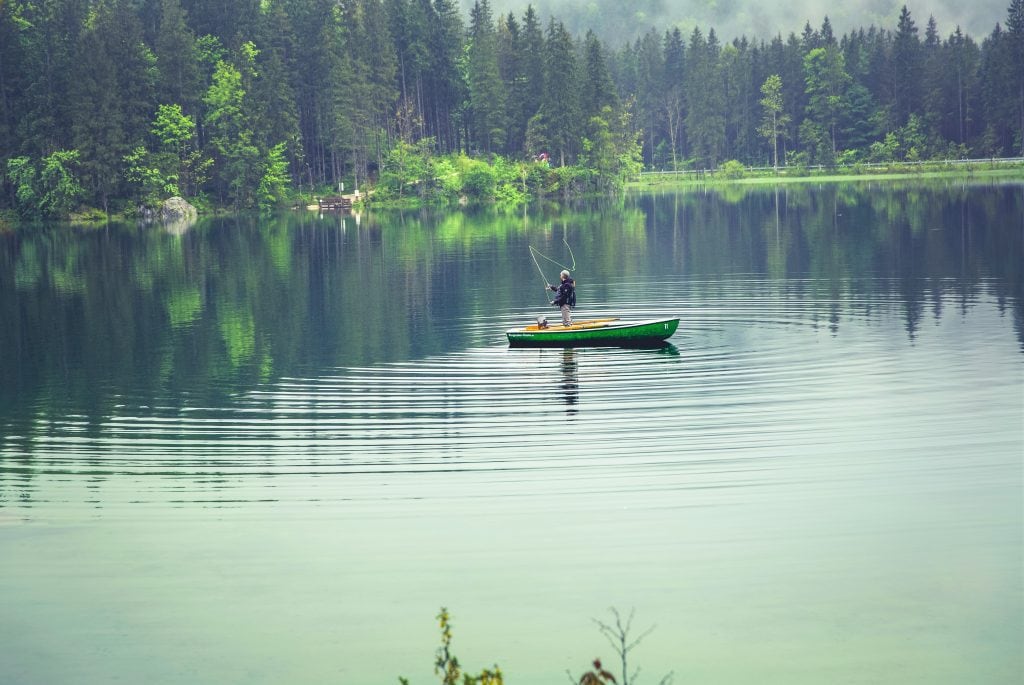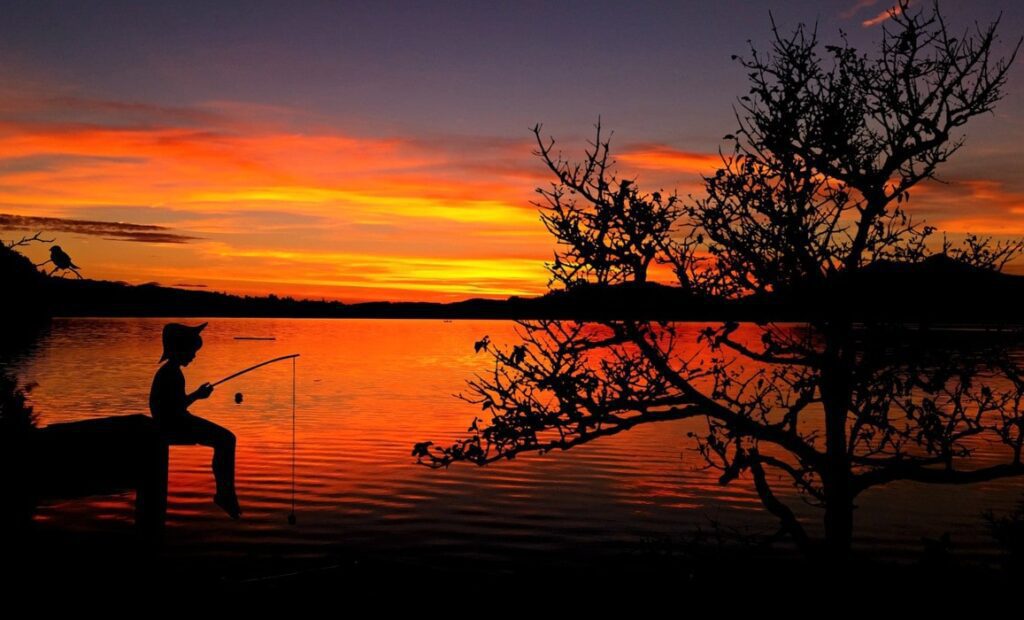The act of catching wild fish for recreational or commercial purposes is referred to as fishing. Sport or recreational fishing is becoming more and more popular in every fishing location in the world. So, as a beginner in fishing, fishing tips are very helpful for people who have a desire to catch wild fish. Fish can be caught using a variety of techniques, such as angling, netting, trapping, gathering, etc. These fishing techniques are beginner-friendly fishing methods. As a beginner, you may think fishing is typically challenging. But here is where you may find the best fishing advice as a newcomer. Use those straightforward fishing rules to have a successful fishing journey.
8 Fishing Tips For Beginners
1. Locating a Good Location & Weather Conditions
Finding a prime spot is the first fishing tip you should learn before setting out on a trip. The optimum location can be found via Google. The locals can also provide you with information about the area. The month, the weather, the condition of the water, the temperature, etc. for the region you wish to visit should also be researched before heading out because fishing is strongly influenced by those factors.

2. Water Types (Freshwater or Saltwater)
Types of water whether you want to go are also important. There is a difference between freshwater and saltwater fishing.
Freshwater
Freshwater fishing means fishing in freshwater like ponds, rivers, lakes, creeks, etc. It is the best way for angling. Also, It doesn’t need so much fishing equipment.
Some Facts about Freshwater Fishing
- Angling is the most effective way of fishing in freshwater.
- The environment and weather have a big impact on this type of fishing.
- Choosing the right bait only can bring success.
- Perfect gears are also the key.
- Relatively cost-friendly fishing.
- The hand should be free from any other smell that can mix with bait and can bring bad results.
- It’s ideal water for small catches like trout, crappie, Alaska whitefish, Alligator gar, etc.
Saltwater
Saltwater means fishing in the ocean. It is the best place for catching big fish. Comparatively, needs more equipment.
Some Facts about Saltwater Fishing
- Saltwater fishing needs big preparation and enough experience.
- Temperature and environment-dependent.
- Required more gear and not it’s not cost-friendly.
- Strong fishing gear (saltwater fishing reel, rods, etc) and perfect bait is the key to catching.
- More adventurous and a little bit risky.
- Ideal for big catches especially. Tuna, tarpon, king salmon, garibaldi, red drum, etc are the common ones.

So ask yourself whether you want to go fishing.
3. Dress up For Fishing
Dresses are also an important factor in going fishing. A suitable dress can make you relax and also help you for surviving in the condition. Here list is given what you must need whether you will go fishing.
- T-shirt and pants or shorts
- Shirt (long sleeve)
- Suitable jacket
- Raincoat if need
- Boots
- Sunglass

You should select your dresses with the environmental conditions.
4. Select Your Desire Fishing Type
There are so many types of fishing. It’s totally up to you how you want to fish. Here we discussed some popular types of fishing that can be helpful in terms of fishing tips for beginners.
1. Angling: The process of fishing by a hook and a line is called angling. Perhaps it is the most popular method among the people who catch fish as a recreational activity.
Equipment that is needed for angling-
- Rod and Reel
- Fishing line
- Tackle
- Bait
- Lures
- Bag for carrying
Essential tips for angling-
- You should learn about the casting of a spinning rod and bait properly. Before fishing, you can practice for better results.
- Depending on the fish that you want to catch you should aware of your bait.
- Keep attention to your lures. Use cheap lures for many time uses. Also, you can take multiple lures for testing. That can bring a good result.
- For angling, the underwater kayak is the best option. You can easily reach any area by kayaking. Also, the kayak is relatively cheap.
- Calmness is required during angling.

2. Fish Trapping: Fish trapping is also used for fishing. It is a trapping system where fish can go but can’t come out. These are mainly used for commercial purposes. This is also an effective way to catch fish with a few techniques.
3. By Net: The net that can be able to catch fish by its structure is called a fishing net. These nets are mainly prepared with nylon. The most popular fishing nets are cast net, dragnet, drift net, coracle net, gill net, hand net, etc. These nets have their individual character. Fishing nets are mainly used for catching big and more amount of fishes.
4. By Hand gathering: This is a technique to catch fish by using one’s hand in the less deep area in the water. Mainly crabs are caught by hand. This method can’t catch much fish.
5. Others: Without these, there are also many fishing methods like fly fishing, fishing with animals, jigging, etc.

5. Consider Your Safety
Safety is placed first beyond all questions. So you should aware of your safety as a beginner. Follow these rules before the journey.
- A first aid kit is needed for the time of injuries and danger.
- License for the area.
- Be careful about your boat.
- Drinking water and Sunscreen
- Life-jacket
- Gear during raining

6. Look into the Environment
You should investigate the surrounding conditions after visiting the location. This is also mentioned before in fishing tips. Always go fishing early in the day. This is the ideal time for fishing. Take note of the water’s temperature. In warm water, I mean during the summer, the ideal fishing times are in the morning and the evening. However, midday is the ideal time for fishing in cold weather. Choosing a peaceful spot to fish in is another great idea to catch good size and quality types of fish.

7. Be Confident and Patient
During fishing remember in mind that it is a patient game. So you need too much patience. Stay calm and quiet. Don’t move fast. Don’t change the spot quickly if you can’t find fish.
Be confident. Believe in yourself that you will be going to catch a fish next step. This confidence is helped you to succeed.

8. Enjoy Your Fishing Time
Fishing is a thrilling game to catch fish in beautiful nature. So enjoy your time fishing. Follow the tips step by step and at a time you will definitely win. Don’t expect more. That can be killed your enjoyment. Make such a mentality that you go fishing just to enjoy yourself with the wildlife. Whatever happened always take it happily.
Closing
Fishing is an activity that can relieve anyone from mental stress Hiking, Camping, or other outdoor activities. It also has the benefits of health. It is a way to make a relationship with wildlife. Fishing tips for beginners in 2019 will help you so much for a successful fishing trip. So prepare yourself and go to nature to explore your fishing journey.
Question & Answers
What is the best fishing setup for beginners?
There are a few key elements to a good fishing setup for beginners:
- Rod and reel: A medium-light or medium action rod paired with a spinning reel is a great choice for beginners. These types of rods and reels are versatile and can be used for a wide variety of freshwater fishing. It’s important to choose a rod that feels comfortable in your hands and is the appropriate length for the type of fishing you plan to do.
- Line: Monofilament fishing line is a good choice for beginners. It is affordable, easy to handle and is versatile enough for different type of freshwater fishing. It’s important to choose a line that has the appropriate strength for the species of fish you plan to catch.
- Lures and baits: A selection of basic lures and baits such as jigs, spinners, and worms, can be used for a variety of freshwater fish species. It’s also recommended to have some form of attractant, such as scents or scent sprays, to help attract fish to your bait or lure.
- Fishing accessories: Basic fishing accessories such as pliers, a fishing net, and a fishing tackle box can also be helpful for beginners.
- Fishing License: It’s important to note that most states require a fishing license, therefore check your local regulations before going fishing.
Keep in mind that, as you gain more experience and get to know more about the specific species of fish you’re after, your equipment, baits, and lures will probably change. But with this basic setup, beginners should be able to get started fishing and have a great time doing it.
What is the easiest fishing method?
There are many different fishing methods, and some may be easier for beginners than others. Some of the easiest fishing methods for beginners include:
- Spin fishing: Spin fishing is one of the most popular and easiest methods for beginners. It involves casting a lure or bait using a spinning reel, and then retrieving it in a steady or erratic motion to mimic the movement of a live bait. It’s relatively simple to learn and allows beginners to catch a variety of fish species.
- Baitcasting: Baitcasting is another method that is easy to learn, this method involves using a reel mounted on top of the rod and casting by releasing the line using a trigger or thumb button on the reel. This method is great for targeting larger fish species and allows for more accuracy in casting.
- Fly Fishing: Fly fishing is considered a more challenging method for beginners, but it is still relatively easy to learn and can be a lot of fun. It involves casting a lightweight lure, called a fly, using a fly rod and reel. It requires more precise casting, but it is a great way to target different types of fish species and can be done in both freshwater and saltwater environments.
- Bottom fishing: This method involves fishing near the bottom of a body of water, using a weight to get the bait or lure to the bottom, this is a good way to catch fish that are feeding on the bottom such as catfish, carp or other bottom dwellers species. It’s simple and easy to do, and doesn’t require a lot of special equipment or experience.
Ultimately, the easiest method will depend on personal preference and what type of fishing you would like to do. The best way to find out is to try different methods and see which one you enjoy the most.
What is the 90 10 rule in fishing?
The 90/10 rule in fishing is a concept that states that 90% of fish will be found in 10% of the water. This rule is often applied to identify the most productive areas to fish in a particular body of water. These areas can include structure such as weed beds, drop-offs, points, and other features that provide food and cover for fish.
The principle behind the rule is that fish, like most animals, will congregate in areas that provide them with the resources they need to survive, such as food and shelter. By focusing your fishing efforts on these productive areas, you’re likely to have more success in catching fish.
It’s worth noting that the 90/10 rule is not a hard and fast rule, and the actual percentage of fish found in a specific area can vary depending on the body of water, the season, and the species of fish you’re targeting. Additionally, it’s important to note that this rule is often used as a general guideline and the percentages can vary depending on the specific water body and conditions.
To put this rule in practice, you can use a variety of techniques such as studying maps, studying the water and observing the fish behavior, also finding local anglers and asking for advice, and experimenting with different lures and baits to find the areas where fish are most likely to be concentrated.
What is the most damaging fishing method?
The most damaging fishing method can vary depending on the specific context and the location, but some methods are generally considered to be more harmful than others.
- Bottom Trawling: Bottom trawling is a method of fishing that involves dragging a large, weighted net across the seafloor to catch fish and other marine species. It is considered to be one of the most destructive fishing methods due to its impact on seafloor habitats and the species that live there. Bottom trawling can destroy coral reefs and other sensitive habitats, as well as bycatch a large number of non-target species.
- Driftnetting: Driftnetting is a method of fishing in which a large net is suspended in the water column and drift with the current, it can be miles long. This method can capture a wide variety of fish species, as well as marine mammals, sea turtles, and seabirds. It is considered to be one of the most destructive fishing methods due to the high number of non-target species that are caught and killed.
- Longlining: Longlining is a method of fishing in which a long line with baited hooks is set in the water. Longlines can be miles long and contain thousands of hooks, which can be harmful to non-target species such as sea turtles, seabirds, and marine mammals, which can be accidentally caught.
- Poison Fishing: Poison fishing is a method of fishing in which poison is used to kill fish, it’s often used in freshwater to kill large numbers of fish in a short period of time. This method is highly destructive to fish populations and can have negative impacts on the entire ecosystem.
- Overfishing: Overfishing is a fishing method that can occur when fishing is done at a rate that is higher than the fish population can sustain. Overfishing can lead to the collapse of fish populations, and can have negative impacts on the entire ecosystem.
It’s worth noting that fishing method in it self can’t be considered good or bad, but the way the method is applied and the regulations or management of it. It’s important to remember that responsible fishing practices and proper regulation can help minimize the negative impacts of fishing methods and preserve fish populations for future generations.
What is meant by ghost fishing?
Ghost fishing refers to the process in which lost or discarded fishing gear, such as nets, lines, and traps, continues to catch and kill fish and other marine animals even after it has been abandoned. This can occur when fishing gear is lost or discarded at sea, as well as when it is left in freshwater. Ghost fishing gear can continue to catch and kill fish, as well as other marine animals such as birds, sea turtles, and marine mammals, for years or even decades after it has been lost or discarded.
The term “ghost fishing” is used to describe the fact that the gear is no longer being operated by a fisherman, but it continues to trap and kill marine life, it acts as a ghost, as it is no longer being controlled by anyone.
The problem of ghost fishing is a significant issue for marine conservation, as it can have a negative impact on fish populations and the overall health of marine ecosystems. It can also cause damage to biodiversity, habitats and can interfere with other human uses such as navigation, recreation and tourism.
There are different initiatives and programs that aim to address this issue, such as the removal and disposal of abandoned fishing gear, the recycling of old nets and other gear, and the use of biodegradable materials in fishing gear. These steps aim to prevent the creation of new ghost fishing gear and to remove existing gear from the environment.


